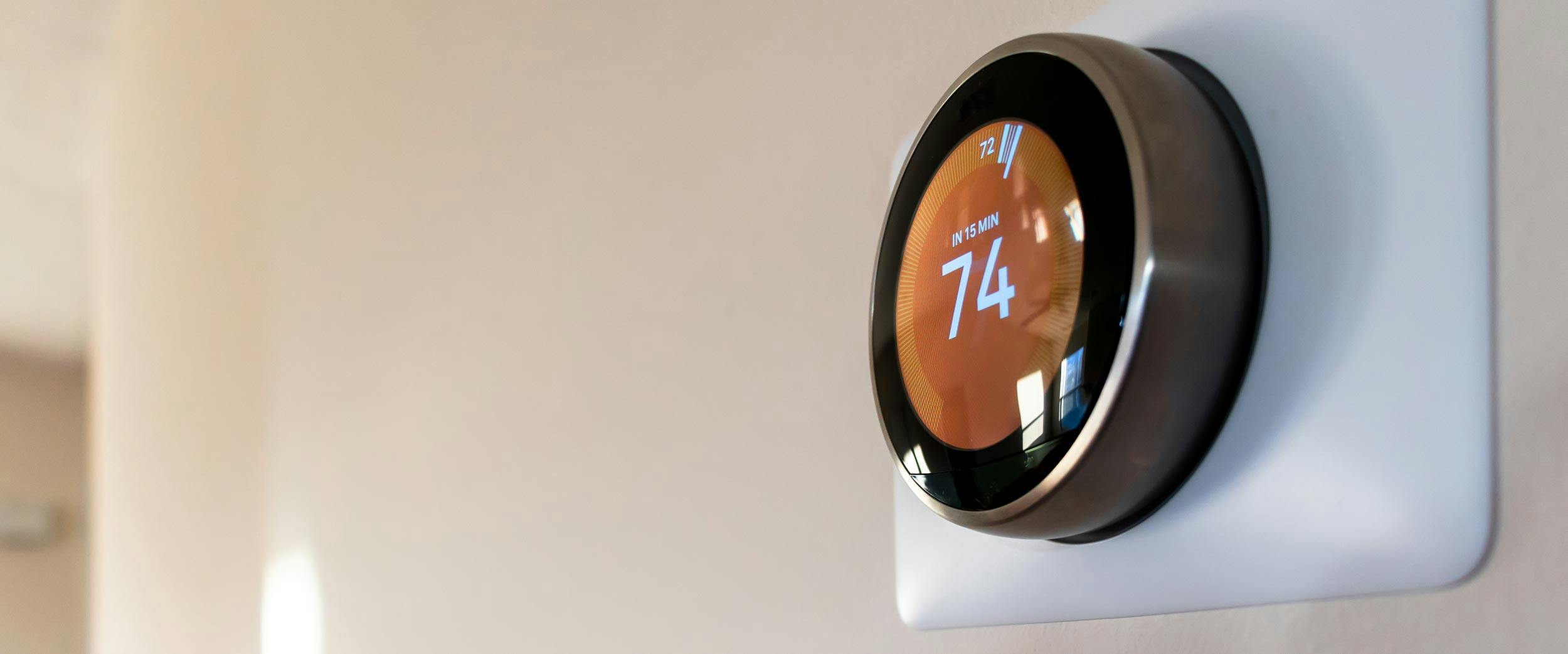
Smart home technology, especially smart thermostats have become increasingly popular with homeowners to automate their homes and add some convenience. But what’s the appeal of a smart thermostat for a landlord?
What Do Smart Thermostats Do?
Smart thermostats help save energy, which means lowering heating costs. They allow users (landlords or residents) to precisely control the temperature based on usage, weather patterns, and time of day. Smart thermostats are designed to make temperature adjustments based on what they detect of the residents’ behavior patterns. That means they’ll heat (or cool) an empty unit less than an occupied unit. For more manual control, you can also tweak and monitor the temperature of a unit remotely. As a property owner, this allows you more control over the energy outputs of your units.
Additionally, smart thermostats are fairly straightforward to install and are compatible with most heating and cooling systems. Aren’t improvements great when they’re easy to integrate into your units?
Pros of Installing A Smart Thermostat in Your Rental
#1: Attract and Retain Renters with Premium Amenities
In housing markets with lots of options for tenants, securing quality renters can be competitive. However, homes with smart tech can be more attractive to renters of all ages. According to the Buildium Annual Renters’ Report, 71% of millennial renters would be more interested in a smart home tech-enabled unit. Even 55% of baby boomer renters (ages 67+) are interested in smart home technology—but only if it’s intuitive to use.
To break the data out to smart thermostats, on average 32% of renters surveyed said smart thermostats would make them more interested in renting a particular unit. Also, smart thermostats are an eco-friendly tech benefit, which appeals to more residents who follow sustainable and energy-conscious lifestyles.
For renters considering whether or not to renew their leases, smart tech could convince them to stay—in the same survey, 12% of respondents said they would be open to renewing if smart home technology were installed.
#2: Raise the Rent
Data from the survey also reveals that 23% of renters believe living with smart home technology is worth paying higher rent. Compared to the top 3 “more desirable” unit characteristics renters would be interested in paying a premium for (in-unit washer/dryer, central air conditioning, and a balcony/private patio), a smart thermostat is much easier to install and add as a benefit. When you add amenities to improve the value of a unit, we recommend doing some market research first to understand how much you can raise rent based on how much people would be willing to pay for added features.
If your residents are considering renewing their lease, you can add your explanation for the upcharge in rent in your rent increase letter. For those who pay their own utilities, you can compare what they’d save in energy costs to what they’d spend in rent, and easily justify your case. Utility companies often do the analysis for you, so be sure to call it out when renters get the bill.
#3: Save Money if You Pay Utilities
For landlords who own multi-family residences and have no way to divide the heating bill amongst tenants, this is an easy way to save some money. Smart thermostats can help you make your units as energy efficient as possible and allow you to control the heating remotely. If your tenants aren’t paying for heat, they likely have no incentive to be attentive about the heating bill, so this is a way for you to monitor it and save some costs.
Additionally, if your unit is vacant, don’t have to worry about wasting energy. You can also get an idea of total usage across your properties, if you own more than one.
Cons of Installing a Smart Thermostat in Your Rental
#1: Initial Costs
The most popular smart thermostats, like Ecobee4, Nest Learning Thermostat, and Lux/Geo WiFi Thermostat, have a wide range in costs, but start as low as $95 and go as high as $220, if you’re buying from an online retailer like Amazon. Depending on how many rentals you plan to add a smart thermostat in, your costs can add up. However, some state energy programs offer rebates for energy-saving devices. For example, Massachusetts-based landlords can check out the opportunities for rebates on MassSave.
#2: Renters who Pay Utilities Pocket the Savings
If your renters pay their heating bill, you’re not saving any money. But, if you’re giving your renters the opportunity to save come costs on their heat, they have another reason to choose your property over another with higher utility costs.
#3: Your Money May Be Better Invested Elsewhere
If you’re considering replacing a major appliance or doing significant renovation work, maybe pause on the smart thermostat. If installing an in-unit washer/dryer or central air conditioning is realistic for your unit and budget, go with what is attractive to a higher percentage of renters.
Another category to consider might be smart cameras or a smart security system, which renters rank high on their list of preferences. Just keep in mind that, not only do these systems cost more to purchase and install, you’ll also want to make sure you prioritize a consultation with neighbors, as these devices could impact issues of privacy.
Make the Decision That’s Right For Your Rental
When it comes to the choice of whether to install a smart thermostat, you know your rental, budget, and market best. And if you don’t, we recommend working with a property manager. A property manager can help you determine if installing a smart thermostat will make your unit competitive with other rentals in the area, setting fair market rent, and assisting with renovations. Considering taking this step? Get free quotes from property managers near you.
